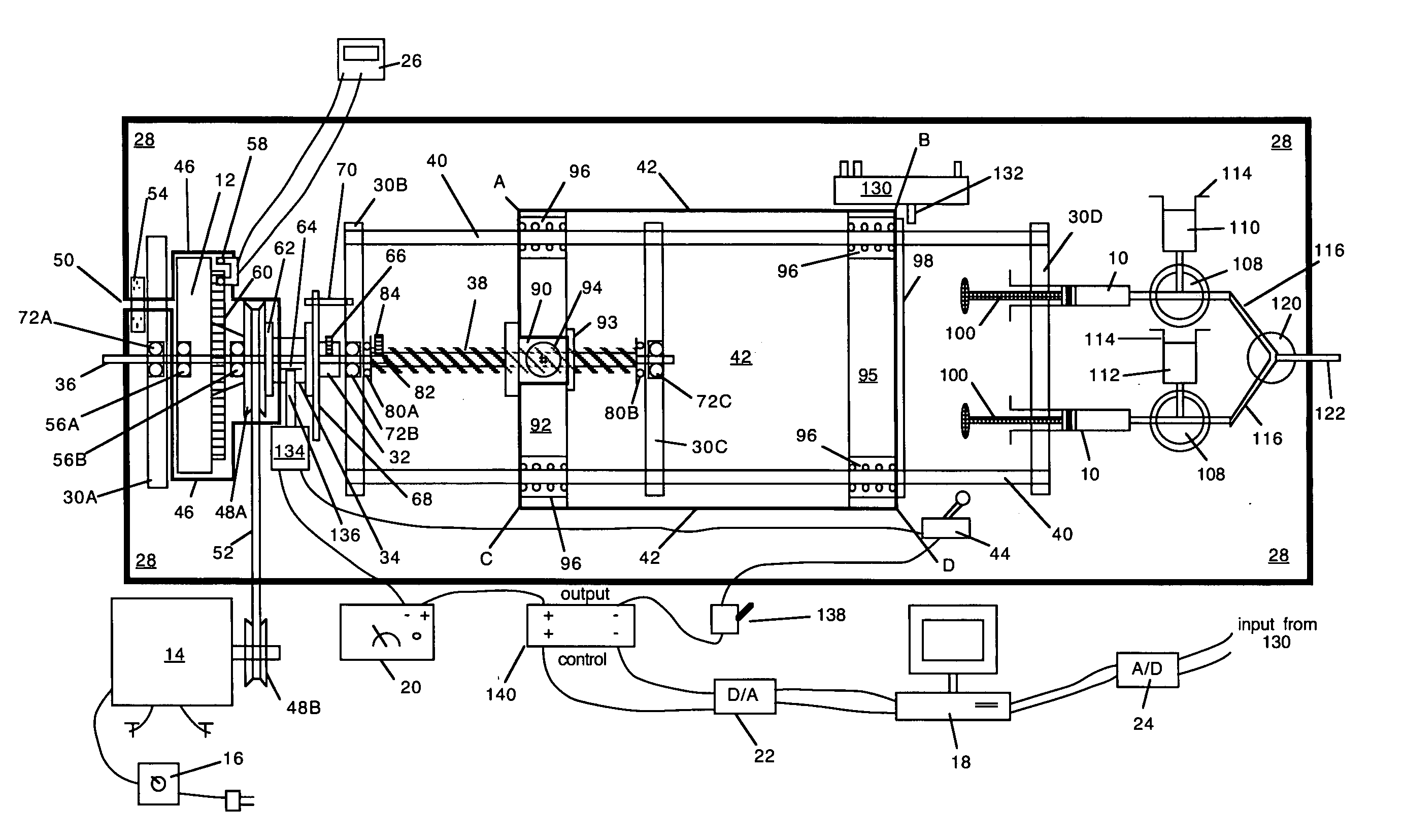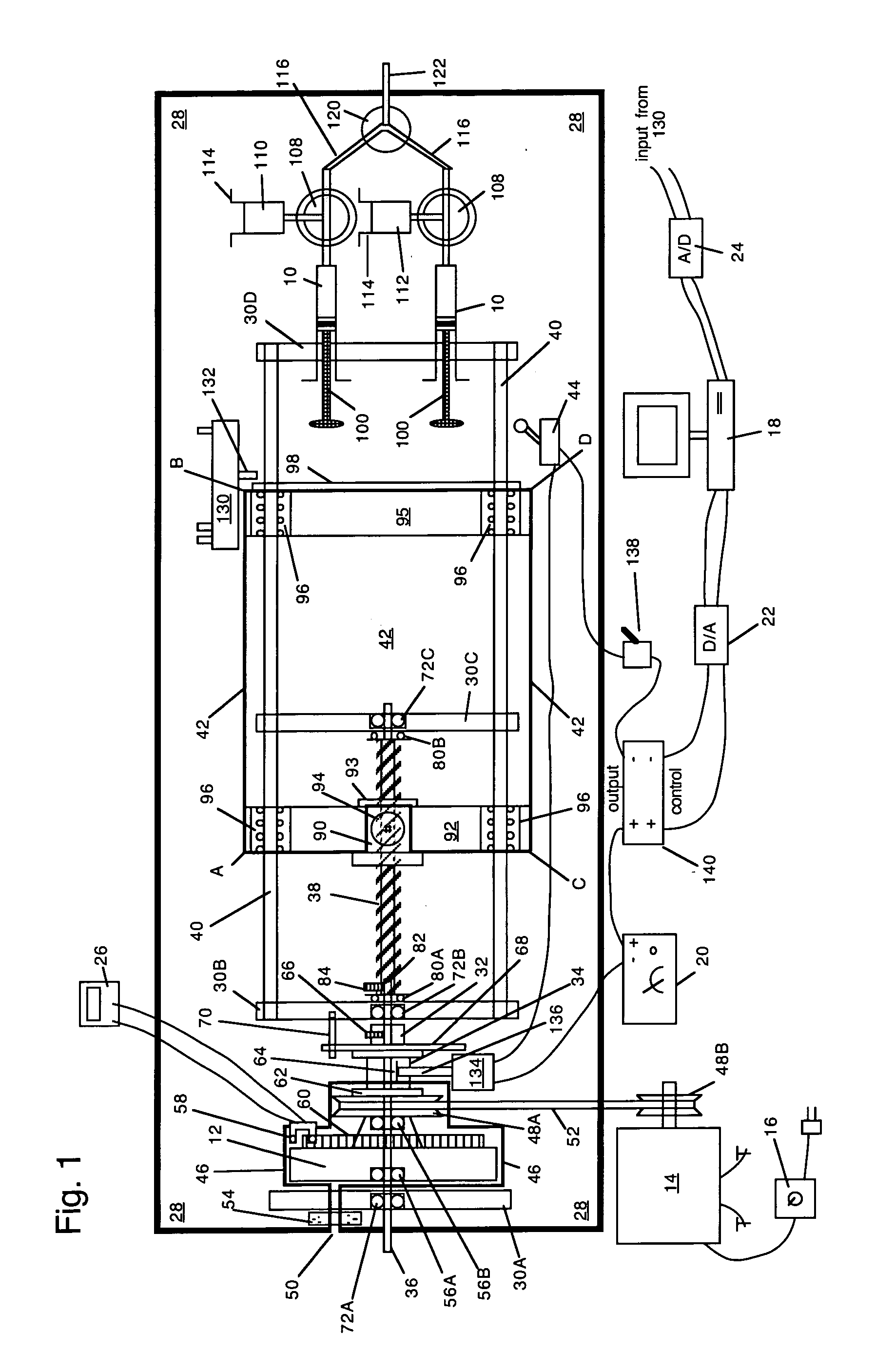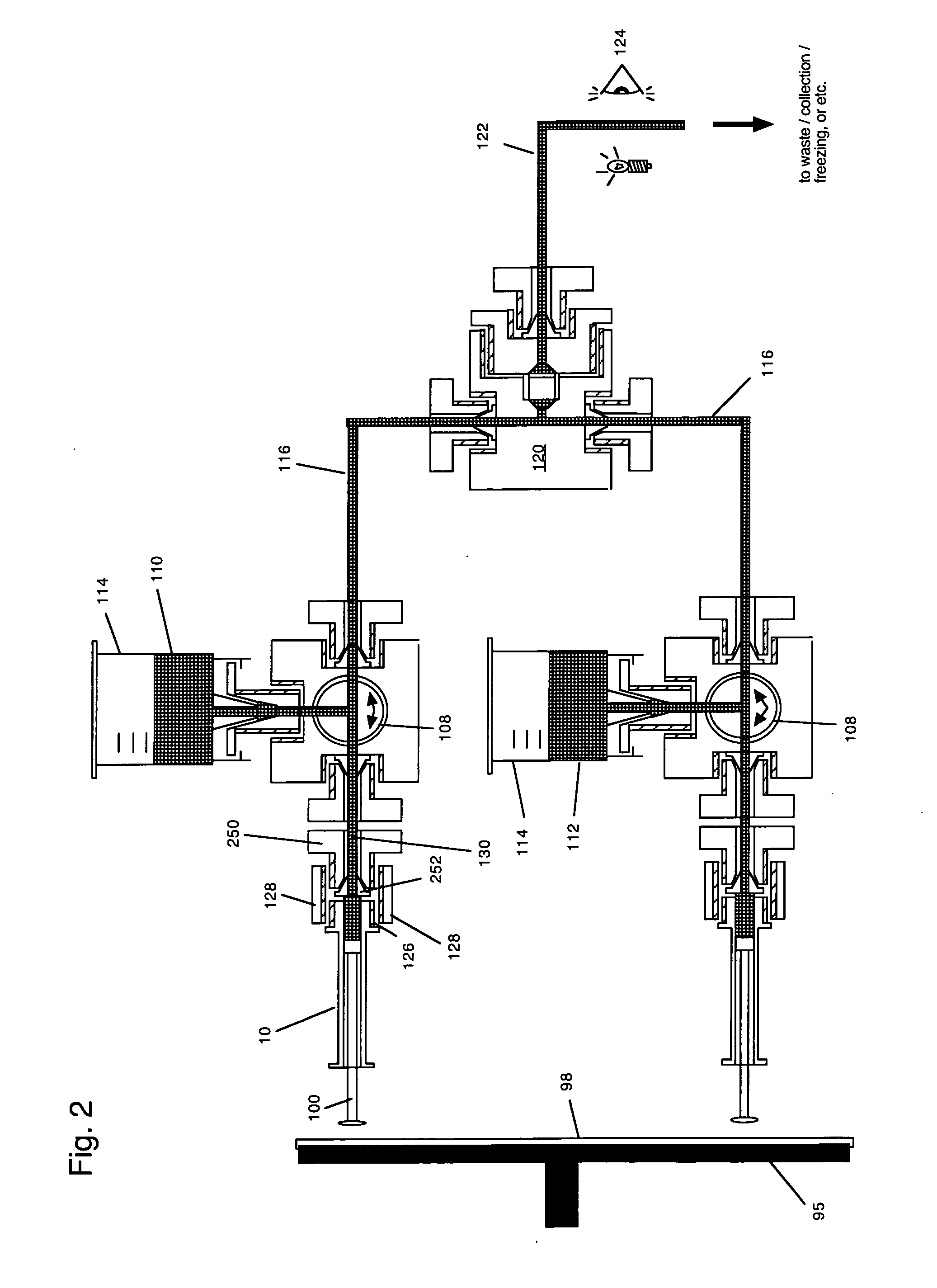Wrap spring clutch syringe ram and frit mixer
a clutch syringe and clutch technology, applied in the field of mixing solutions, can solve the problems of inability to achieve pushes of less than a few tenths of a second duration, and inability to accelerate and decelerate even a low-inertial dc motor and drive system. , to achieve the effect of rapid reaction
- Summary
- Abstract
- Description
- Claims
- Application Information
AI Technical Summary
Benefits of technology
Problems solved by technology
Method used
Image
Examples
Embodiment Construction
[0058]All dimensions listed, all manufactures listed (for example Warner Electric, Labtech, etc.), and all materials used (such as brass, aluminum, plywood, plastic etc.), in this application are given by example, and not by way of limitation.
[0059]FIG. 1 presents a top view of a wrap spring clutch syringe ram. The syringes 10 are mounted at the front of the ram, and the flywheel 12 is mounted toward the rear of the ram. The flywheel 12 has substantial mass. The entire ram apparatus (except for the motor 14, DC motor speed control 16, computer 18, power supply 20, D / A converter 22, A / D converter 24, tachometer 26, and a few ancillary items, such as batteries, not shown in FIG. 1 are preferably mounted on a ½ inch thick aluminum platform 28 of dimensions 46½ inches long by 13 inches wide. In FIG. 1, the top surface of this aluminum base 28 may be regarded as the plane of the sheet of paper. The ram itself is mounted firmly to the top of the aluminum platform 28 with twelve nylon scre...
PUM
 Login to View More
Login to View More Abstract
Description
Claims
Application Information
 Login to View More
Login to View More - R&D
- Intellectual Property
- Life Sciences
- Materials
- Tech Scout
- Unparalleled Data Quality
- Higher Quality Content
- 60% Fewer Hallucinations
Browse by: Latest US Patents, China's latest patents, Technical Efficacy Thesaurus, Application Domain, Technology Topic, Popular Technical Reports.
© 2025 PatSnap. All rights reserved.Legal|Privacy policy|Modern Slavery Act Transparency Statement|Sitemap|About US| Contact US: help@patsnap.com



